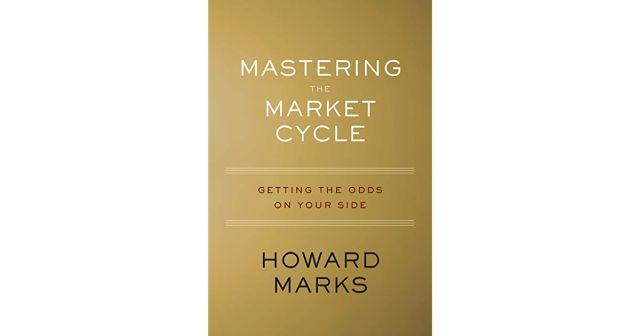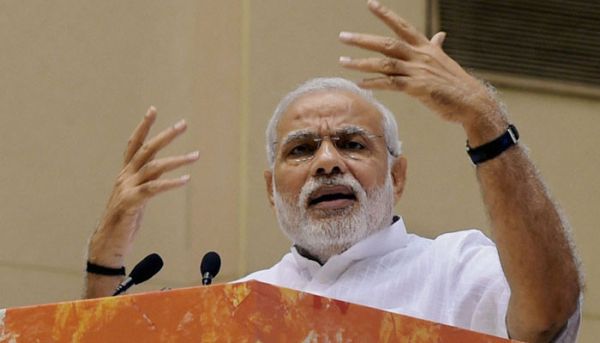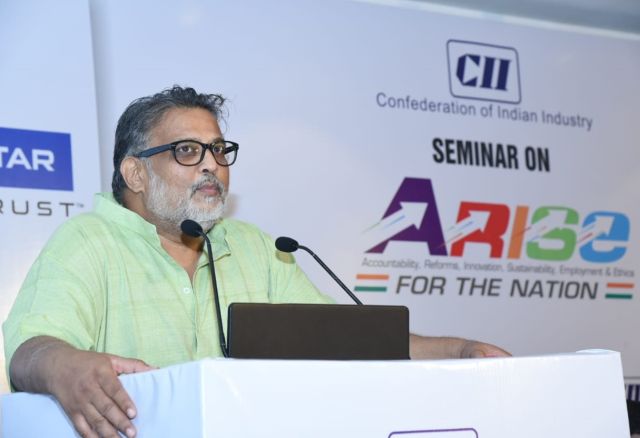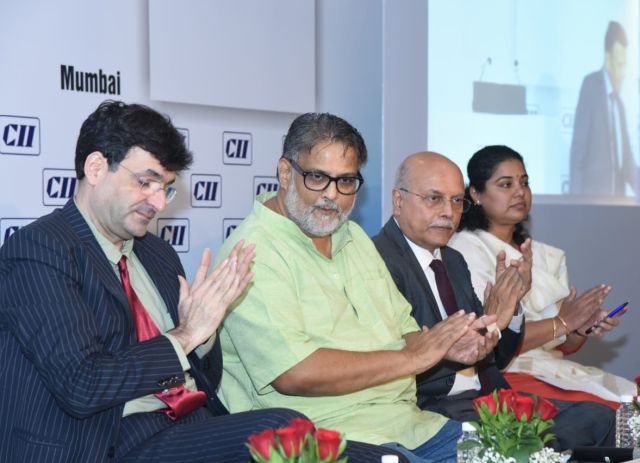
by Editor | May 25, 2021 | Books
 By Ravi Dutta Mishra,
By Ravi Dutta Mishra,
Book: Mastering the Market Cycle; Author: Howard Marks, Publisher: Hachette India; Pages: 315; Price: Rs 699
In his new book “Mastering the market cycle”, Howard Marks, one of the most successful investment managers, attempts to explain what makes and breaks the market and why economics and business never move in a straight line.
Mark’s client memos are widely read by professionals in the field. He previously wrote “The Most Important Thing”, published in 2011, consisting of 20 investment insights.
In “Mastering the Market Cycle”, he focuses on investor behavior which, according to him, is the key to understanding the highs and lows of a market cycle.
One of the main points Marks asserts is that despite financial facts and figures being the basis of how markets move, this is “only a starting point”.
“People’s decisions have great influence on economics, businesses and market cycles. In fact, economics markets consist of nothing but transactions between people. And people don’t make their decisions scientifically.”
Marks compares investors to electrons on another occasion, borrowing from physicist Richard Feynman’s observation: “Imagine how much harder physics would be if electrons had feelings!”
“That is if electrons had feelings, they couldn’t be counted on to always do what science expects of them, so the rules of physics would work only some of the time,” says the author.
Investors are portrayed as “economic men” but when it comes to taking a decision, Marks says the market spends little of its time calmly weighing financial data and setting prices free of emotionality.
He uses the adage, “markets fluctuate between greed and fear,” to explain that the fundamental reason behind the fluctuation is because people oscillate between greed and fear. This theme of deciphering investors behavior runs across the book and is the heart of how he explains the market cycle.
Based on his memos and experiences over the years, Mark’s book has a great deal to offer for investors and market enthusiast from around the globe. The back cover carries a compliment from Warren Buffet: “When I see memos from Howard Marks … I always learn something.”
Investment, Marks says, is like the choosing of a lottery winner. Both are determined by a ticket being pulled from a bowlful of tickets. The superior investors according to the author, are people who have a better sense of which tickets are in the bowl, or whether it’s worth participating in the lottery.
Howard’s book is not just for the people who understand trading or for experts who deal with market cycles. It can be enjoyed with a fundamental understanding of economics and business but could have been better with fewer repetitions.
However, to single out a niche audience for whom “Mastering the Market Cycle” is a must read are people interested in behavioral finance.
The book may inspire an Indian expert to explain the market cycles taking the readers through the Dalal Street and the 1991 balance of payment crisis in India than Wall Street and the 2008 financial crisis that originated in the US, as Marks says in this book.
(Ravi Dutta Mishra can be rached at ravi.m@ians.in)
—IANS

by Editor | May 25, 2021 | Opinions
 By Frank F Islam,
By Frank F Islam,
In this year’s Ease of Doing Business report, India moved up 23 positions to reach 77th — the highest the country has ever been placed in the 15-year history of the survey. India must continue its journey on that path until it ranks at or near the top of the ranked countries
“We want to make India a destination which not only welcomes business but where it is easy to do business.” Prime Minister Narendra Modi made this promise at the US India Business Council meeting on June 7, 2016. Now, just a little more than two years later, India is on the right path to deliver on that promise.
That’s what the flagship Ease of Doing Business Report (Report or World Bank Report) released by the World Bank shows. In this year’s report, India moved up 23 positions to reach 77th — the highest the country has ever been placed in the 15-year history of the survey.
The Ease of Doing Business survey studies regulations that affect businesses in over 190 economies around the globe. Its ranking is based on indices such as the required procedures and time to start a business; registering property; protection of investors; and enforcement of contracts.
The new report highlighted the fact that India is one of the 10 countries “with the most notable improvement in Doing Business” this year. In fact, India was one of the only two countries that figured in the list of top 10 improvers for two consecutive years. The other is Djibouti.
This is evidence that the flurry of reforms made by the Indian government to improve business conditions, after Modi’s promise to the global business leaders in the US Capitol, have paid off. As the World Bank Report notes, India has made 14 “sizeable improvements” in the past two years.
Most notable among them was the replacement of the value added tax (VAT) with the Goods and Services Tax (GST). The GST got off to a rough start because of considerable initial confusion regarding it and multiple changes during its first year of existence. It is established now and — it will, no doubt, make life a lot easier for businesses. As the World Bank Report pointed out, the GST, a single-tax system, is a vast improvement on the multilayered VAT framework, making the payment of tax a lot easier.
Other regulatory measures initiated by India in the past year that have resulted in the higher ranking identified in the report include the integration of multiple application forms into a general incorporation form; the streamlining of construction permits; the lowering of electricity charges; and increased access to credit.
Another example of substantial improvement is provided by the area of business registration. In 2003, the process was a long-term project requiring roughly three months. Currently, the process takes less than two-and-a-half weeks. Today, there is also much greater access to capital in India than ever before.
Each and all these improvements are critical to India’s future economic growth. An economy as large as India’s will always pique the interest of the outside world because of its sheer size and the number of consumers it boasts. That’s why since the early 1990s when doing business was not as easy multinational companies have pursued selected business development opportunities in India.
But, now with the country’s nominal GDP fast approaching the $3-trillion mark, an uninterrupted and increased inflow of foreign investment and sustained domestic investment are essential for the continued growth of the economy. There is a definite need to diversify and magnify the nature and levels of investment.
The good news, as the foregoing attests, is that the Modi administration has made excellent strides in improving the investment climate and the ease of doing business. This has given both domestic and international businesses the confidence to increase and expand their business initiatives in India.
In spite of this real and significant progress, much work still needs to be done for India to unleash the full potential of its economy and to become a world leader in terms of the ease of doing business.
The permit raj may have weakened, but it is still there. As an example, in the report’s specific index for starting a business, India ranks behind 136 countries. In India, it takes more than six months on an average to obtain a construction permit and registering a property takes more than a month and a half. These signal that there is quite a way to go on this path.
But India is on the right path. Just two years ago, India was ranked 130th. Today, it ranks 77th.
India must not consider 77th as good enough. It must continue its journey on that path until it ranks at or near the top of the ranked countries. Reaching that destination will ensure a solid future for India and its citizens.
Frank F Islam is an entrepreneur, civic leader, and thought leader based in Washington DC.
The views expressed here are personal

by Editor | May 25, 2021 | Economy, Investing, News, Opinions, Property
 By Taponeel Mukherjee,
By Taponeel Mukherjee,
As the Indian economy evolves, value-creation opportunities in real estate will exist as much in capturing the consumption-growth upside as in pursuing strategies of specialisation. The last decade has seen significant investments in real estate and real estate-related infrastructure, as investors braced for growth and development. The next phase of growth will be driven as much by value-added real estate strategies as by capital market innovation in real estate financing.
Mapping real estate by larger secular trends would give us fascinating insights into the real pockets of demand. Some of the broad secular trends we see are rising income profiles, a gradually larger pool of senior citizens with life expectancy increasing, increased retail consumption (both online and offline) and increasingly high consumption of data, among others. Not only have these trends created the need for specialised real estate, but also the need for greater partnerships between service providers and real estate investors.
Real estate strategies will have to go on to add value through a broad array of services through partnerships and astute asset selection. For example, warehouse real estate space has received significant investments over the past few years. The question is: How will the market evolve as demand further picks up?
The key to warehouse businesses is twofold. Firstly, scale up from being purely real estate providers to “solutions providers”. Such warehouse businesses should have the capacity and know-how to cater to an increasingly large and fragmented user-base with technology, real estate and supply-chain expertise to help support the business ecosystem. While this trend has started already, the future holds greater promise and investment returns, if done well.
Secondly, for warehouse businesses and platforms, it is essential to keep building on the spoke and hub model. Large-scale warehouses, linked to dispersed smaller warehouses, catering to increasingly quicker delivery times is how it is going to be in the future.
Another sector where the real estate partner can provide both real estate expertise and relatively inexpensive access to capital to the service provider will be healthcare. Assets such as hospitals and high-end laboratories need access to significant real estate. Usually, either the hospital acquires the real estate or rents it. There is potential going forward for institutional platforms to purchase land to be leased to hospitals. The key to the strategy mentioned above versus piecemeal renting of hospital land is the ability of the platform to source capital at a significantly lower cost versus what the hospital chain can do.
The healthcare real estate focused platform may able to do so for a variety of reasons such as having access to a pool of investors with a lower cost of balance sheets and better credit ratings. Both the factors will provide a lower cost of capital. Additionally, for platform investors, a diversified pool of real estate assets does lower the risk profile through diversification, which in turn reduces the cost of capital for healthcare real estate asset.
Such innovative real estate strategies will be vital to fuel the next phase of growth for real estate-heavy sectors such as healthcare. The ability of healthcare providers to focus on healthcare services and have a less demanding debt-burden will be a significant value creator in the ecosystem. Real estate-focused investors, funds and, eventually, healthcare Real Estate Investment Trusts (REITs) will provide a liquid capital base with which to scale business.
Ultimately, investor-access to platforms that allow for some degree of secondary market liquidity will further help reduce the cost of capital for businesses. A combination of innovation in real estate and the “capital structure” that drives the real estate will be significant business drivers.
The previous strategy or some modified version of it will apply to many of the new sunrise sectors. A sector such as datacentres is also a component of a differentiated real estate strategy, whereby a combination of technological capacity combined with real estate acumen will drive the data centre real estate play. In an economy such as India with a structural demand, value creation opportunities abound.
A word of caution: A thorough analysis of demand-supply dynamics will be critical for long-term success. Given the very nature of real estate, both macro and local factors have a significant influence on investment returns. Past experience suggests that when local factors are ignored, investment returns can be adversely affected even with positive macro fundamentals.
(Taponeel Mukherjee heads Development Tracks, an infrastructure advisory firm. Views expressed are personal. He can be contacted at taponeel.mukherjee@development-tracks.com or @Taponeel on Twitter)
—IANS

by Editor | May 25, 2021 | Economy, Investing, News, Opinions
 By Taponeel Mukherjee,
By Taponeel Mukherjee,
Given the current economic scenario of India, it would be prudent to have our eyes on the pressing issues that need the attention of the government over the next six years. Policy changes, new policies and an environment that facilitates investment will be vital.
The recent renewable energy auctions, which failed to attract significant bids, bring to the fore the crucial question around price caps. While providing low-cost electricity is essential, so is a sustainable power sector. The issue that merits more debate is whether a free-pricing market with a regulator that ensures no cartels are formed is a better solution in the long run than price caps.
This argument applies not only to renewable energy, but all sectors. Investors in any sector face variable dynamics across a variety of factors ranging from input prices, credit costs, research and development costs and foreign exchange risk. “Pricing” of a product or a service needs to consider all that goes into making or producing the product.
To give an example, drug pricing for a patented drug involves significant research and development costs. Therefore, the price of a drug needs to factor in a fair amount of analysis to determine the price over and above raw materials.
Similarly, for other sectors, it is vital that the rapid pace of growth and expansion can continue so that risk-taking businesses can get rewarded adequately. Extreme measures to control prices can lead to sector problems, thereby discouraging investments and research. Therefore, over the next few years, it is essential to strike a balance between low-cost products and services, and sustainable industry dynamics.
In the financial markets, India needs to further embrace mark-to-market valuations in the corners of the market that still utilise hold-to-maturity accounting. Banks hold certain financial instruments as hold-to-maturity from a regulatory perspective. Besides these instruments, the quicker the rest of the fixed income product universe moves towards mark-to-market regulations the more robust a capital market India will have.
While increased mark-to-market regulations might lead to an initial slowdown in the bond markets, the long-term benefits of a transparent credit pricing market far outweigh any short-term costs. The most significant advantage of stringent mark-to-market regulations will be the ability of market prices to be a better indicator credit risk of products, thereby encouraging effective risk management by investors and financial institutions alike.
Divestment of government assets to create new infrastructure will be crucial. The recent decision to approve the divestment of the government’s stake in the Dredging Corporation of India and the in-principle approval of the PPP model for six airports is a step in the right direction. However, to deliver valuable infrastructure, the government must ensure that non-tax revenue is used to develop infrastructure in the specific sectors where the divestment occurs, or the PPP happens. Enabling infrastructure creation that is industry-specific regarding both the divestment or partnership and in creating new assets will add significant value.
The agriculture sector will require focus with renewed vigour over and above minimum support prices and farm loan waivers. The sector is vital not just to improve the lot of farmers (who are at the riskiest end of the farm-to-fork model) but also to create avenues to feed a sizeable consuming population. The farm-to-fork model is much spoken about and needs a step-wise approach to succeed in the long-run.
A good start would be to choose sub-sectors within agriculture that are amenable to a farm-to-fork model so as to create a “model template”. A farm-to-fork model would involve procuring the original product, processing, storage and transportation, and merchandising the product. Choosing the low-hanging fruit to create templates will help expedite the process. More importantly, user-cases will help spot the gaps within the agricultural supply chain.
Government policies that create an effective pricing environment and avenues for revenue generation to enable investment and infrastructure will be crucial going forward. More importantly, long-term sustainable growth will require a balanced approach to help promote a broad spectrum of sectors such as energy, finance and agriculture.
(Taponeel Mukherjee heads Development Tracks, an infrastructure advisory firm. The views expressed are personal. He can be contacted at taponeel.mukherjee@development-tracks.com or @Taponeel on Twitter)
—IANS

by Editor | May 25, 2021 | Corporate, Corporate Buzz, Economy, Finance, Markets, News
ARISE – a new propeller for India’s Growth
“Need for a low Tax framework ”– Dr Ajit Ranade
By Maeeshat News,
CII organized Seminar on ARISE: Accountability, Reforms, Innovation, Sustainability and Employment, the initiative of CII western region to ARISE for the nation. It is in line with the India@75 movement which is a vision towards building a Vibrant and Prosperous India. The Session was inaugurated by Mr Tushar Arun Gandhi, the Great Grandson of Mahatma Gandhi and Trustee to the Gandhi Peace Foundation.
Speaking on the aspects of ARISE, Mr Tushar Gandhi, spoke on social welfare and economic equality. He further added that there is lack of awareness amongst people with regards to prevailing welfare policies. Also urged industries to follow the known Gandhian philosophy of ethical business practices.
“Need for a low Tax framework” – Dr Ajit Ranade, Chief Economist and President, Aditya Birla Group, Further Dr. Ranade added that low tax framework will not only add more tax payers but also help in elimination tax frauds. Developing a modern tax regime will help in collecting a bigger kitty for social reforms.
Mr Piruz Kambhatta, Chairman, CII Maharashtra Western Region Council, & Chairman & Managing Director, Rasna Pvt Ltd gave a wonderful message on Accountability by quoting Mahatma Gandhi “Welfare of the Society is not just a responsibility of the Government alone but of Businessmen too”.
“India can be the food factory of the world “ – Mr B.Thiagarajan, Chairman CII Maharashtra State Council & Joint MD, Blue Star Ltd. Adding on the Accountability & employment aspect of ARISE, he further spoke about the role of govt to act as facilitator in Ease of Doing Business today’s business house are very well understand their responsibility towards the society.
Mr Shailesh Haribhakti, Fellow Chartered Accountant & Chairman, DH consultants & Managing Partner Haribhakti & Co, spoke about a common platform for checking the creditability of worthy MSMEs He further added that the greatest advantage of India is the capacity to deliver any services. The political & legal systems should operate in such a way that the right data falls in right hands.
The inaugaural session was followed by a Session themed Panel discussion which probed deep into each aspect of the ARISE theme through Industry Champions in each sector.
Mr Anirman Ghosh, Chief Sustainability Officer, Mahindra & Mahindra, was of the opinion “India is Shining” but the only problem is proper usage of funds & resources. Land, Labour & Capital needs to be managed efficiently and at optimum levels.

Prof. Y.S. Rajan, Indian Professor, Scientist & administrator & Honorary distinguished professor in ISRO. Quoted that one cannot have a common solution for all problems. One single solution cannot to used to across the pyramid. ‘Innovation is not a subject of just having young vibrant minds, it is about asking the right questions at the correct time’ – said Prof Y S Rajan at the CII Seminar on ARISE.
The seminar on ARISE, CII Western Region Theme for 2018 – 2019, organised at the Mayfair Banquet, on 12 November 2018, Mumbai and was well accepted by the industry and Academia alike, with a good participation and a very interactive Q&A session where they pondered on the issues of Accountability, Sustainability and innovation.






